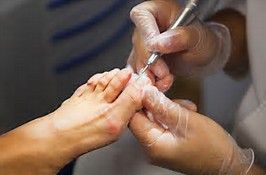More from suncoastpodiatry suncoastpodiatry
More in Politics
Related Blogs
Archives
Social Share
Do you need special shoes for orthotics?
Body
Do you know flat feet or high arches are the reason behind chronic Diabetic Foot Care? Many people have structural defects in their feet that lead to complications of pain, swelling, or inflammation.
Orthotics are great for relieving the pain as the custom shoe inserts work effectively to redistribute the pressure. However, it is important to use the right product to obtain the required support under the contours of your feet. Orthotics come in myriads of shapes and sizes. To make the most out of your shoe insert, you must wear podiatrist recommended footwear.
You cannot use just any footwear and expect miracles from the inserts. When you get a custom device to redistribute the pressure, you must ensure that the device is working efficiently with the right pair of orthotic shoes. Thoughtful selection of footwear is essential because:
- The wrong pair of shoes can reduce the functionality of orthotics.
- No matter how expensive your orthotics are, you will never be able to get the desired results while using the wrong pair of shoes.
- Instead of the brand and price tag of your current footwear, ensure that the shape of the shoe matches your feet to offer ample support.
What kind of shoes are perfect for orthotic insoles?
You need to consider a lot of things when buying shoes, such as:
- Firm heels: Wearing orthotics must not be uncomfortable when you run or walk fast. Therefore, the shoes you pick must have a sturdy heel . Additionally, certain types of orthotic devices needlow height heels. Low heels are great for comfortable walking while wearing orthotics.
- Sturdy midsole: Orthotics devices are used to redistribute the pressure under the feet. Therefore, it is important to pick shoes with dense midsoles. The shoes must not be compressed easily.
- Firm structure: Choose a rigid structure that doesn’t twist easily. If you wear soft and flexible shoes then the expected arch support from the orthotics might not be attained.
- Wide footbed and toe box: Walking becomes easier with a wider footbed; also it is an ideal shape for orthotic devices. Similarly, the toe box must be wide otherwise problems like bunions and toe inflammation will arise.
- Removable footbed: Orthotic devices come in all shapes and sizes. Some are so thick that they take up a lot of space in your shoes. To avoid reducing the depth of shoes, you must pick a pair with removable insoles. Additionally, it is highly recommended that the shoes you pick have enough depth so that your feet don’t slip away while wearing orthotics.
Which are the best orthotics shoes?
There is no one-size-fits-all approach when it comes to orthotics. You can consider the characteristics listed above to find the right pick for you.
Depending on your foot condition, the size and shape of orthotics change, therefore you must consult a foot doctor to find the right pair of orthotic friendly shoes.
For example, the Double Depth Sport Walker available through Suncoast Podiatrist on the Sunshine Coast is perfect for orthotics because it accommodates extra depth and width. All sizes of orthotics can fit in this model perfectly. The toebox is comfortable and the shoes come with adjustable straps and elastic laces so that the depth and width can be adjusted according to your foot size.
The fit of the shoes
While buying orthotic friendly shoes, always check the product description carefully to ensure that it meets your needs. You must pick a model with extra depth and width with a wide toe box. Pay attention to the product detail or seek customer assistance if you want to learn more about the shoe shape. Make sure the shoe you pick matches your foot shape and size perfectly. Keep your receipt when purchasing and before you wear the shoes, get your podiatrist to check they are suitable. If not, exchange the shoes or get a refund.
Expert guidance is necessary when selecting orthotic devices Moreover, it is absolutely fine to be unable to find the best fit in one go. A podiatrist will conduct a thorough assessment to check your foot shape, size and underlying condition to offer you the most suited suggestion. However, a follow-up appointment is essential to ensure that the orthotics you get are comfortable and doing their job in an expected manner.
Adjustment period
Wait for at least six months to get used to the new pair of shoe inserts. It is advised to try out your orthotic devices with orthoticshoes for the first six months. When you get used to the fit, you can experiment with other styles.
Are orthopaedic shoes the same as orthotic shoes?
There are various types of foot conditions and a wide variety of treatment choices available. Orthopaedic shoes and diabetic footwear are becomingincreasingly popular because they are used to improve the function of walking. The medically beneficial features of orthopaedic shoes are functional for the foot and ankle but they are entirely different from orthotic shoes.

A pair of orthopaedic shoes improves biomechanical foot function in general but orthotics on the other hand, are custom devices that are made to fit the needs of an individual. Orthotic shoes come in a wide array of styles to accommodate different types of orthotic insoles.
Both orthopaedic shoes and orthotic friendly shoes are aimed at offering the utmost level of comfort and correction to the wearer. It is essential to get your feet assessed by an expert to determine the right foot care product for you. Visit the link given below to consult the best Podiatrist Sunshine Coast.









Comments